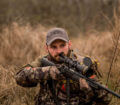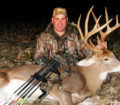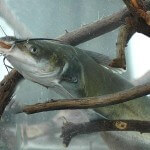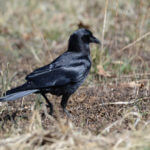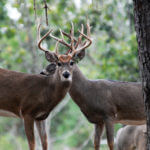Editor’s Note: Can you identify a buck fast and get off a clear shot before he vanishes in thick brush? Although not easy, there are ways you can speed-up your reaction time. How does a batter see a ball coming toward the plate at 90 mph, and time his swing to hit the ball? Travis Fryman, who played with the Detroit Tigers and the Cleveland Indians for 13 years, batting in 1,022 runs, making 223 home runs and five times earning MLB All Star status, says, “I not only can see the ball as it leaves the pitcher’s hand, but I also can see the seams of ball as it rotates toward me.” Fryman, a longtime hunter and fisherman, uses his vision skills he sharpened working with a developmental optometrist on his baseball hitting to hunt more effectively. The quicker you can see and identify a buck and determine the direction he’s traveling, the quicker and more accurately you’ll shoot. You must understand the difference between eyesight and vision. If you start now, by the time deer season arrives in the fall, your ability to see deer greatly will have improved. NFL teams use developmental optometrists to teach quarterbacks to spot open receivers. One friend of our son’s went to a developmental optometrist for 6 months to improve his vision to get accepted into the Navy pilot program.
 When I asked Dr. Etting of Encino, California, a developmental optometrist (see Day 1), why some hunters can’t see deer in the woods, even when they are as close as 20-100 yards away, he explained that several skills are required to perform this task. “First of all, we have to assure that a hunter can see clearly – with or without glasses. Then he must use clues from the environment to help him discriminate the deer from the background. This discrimination process should happen quickly.”
When I asked Dr. Etting of Encino, California, a developmental optometrist (see Day 1), why some hunters can’t see deer in the woods, even when they are as close as 20-100 yards away, he explained that several skills are required to perform this task. “First of all, we have to assure that a hunter can see clearly – with or without glasses. Then he must use clues from the environment to help him discriminate the deer from the background. This discrimination process should happen quickly.”
One of the clues the deer hunter should look for is a line parallel to the ground, about 3-4 feet high. A hunter who sees this may be looking at a deer’s back. The hunter must then rapidly take in other information from the scene to confirm that he’s seeing a deer. So, he should learn to rapidly recognize the twitching of a deer’s ear, the sun dancing off an ivory-colored antler, a leg protruding from behind a tree and a tail swishing.
However, the ability to see deer in the woods is only part of a hunter’s visual skill. Another skill critical to successful deer hunting is reaction time, which Dr. Etting defines as, “How quickly the hunter can detect the location and the size of the target and the direction and the rate of its movement and then respond by bringing his gun to the shooting position.”
You can determine the location of the target by looking at portions of the deer or by watching for signs of movement. How big the deer looks, however, is affected by distance as well as actual size. If you see a 250-pound deer at a distance, the image transmitted by eyesight is that of a smaller deer. Vision however, factors in the distance and tells you that the deer is indeed a trophy. A sportsman must allow his vision system to override his perception system to accurately calculate his shot. You can use a range finder or can pace off the distance to objects to check your ability to estimate the deer’s sizes from far away.
 Further deciding the relative speed of a fleeing deer and bringing the gun to a shooting position requires conscious coordination of both eyes. If you’re following a deer with only one eye, aiming becomes difficult. Dr. Etting gives as an example: “A man who drives a wagon that is drawn by two horses – one a carriage horse and the other a racehorse – has tremendous problems. He has so much trouble keeping the two horses pulling together that he has difficulty staying on the road, and seeing where he is going or when he has been.”
Further deciding the relative speed of a fleeing deer and bringing the gun to a shooting position requires conscious coordination of both eyes. If you’re following a deer with only one eye, aiming becomes difficult. Dr. Etting gives as an example: “A man who drives a wagon that is drawn by two horses – one a carriage horse and the other a racehorse – has tremendous problems. He has so much trouble keeping the two horses pulling together that he has difficulty staying on the road, and seeing where he is going or when he has been.”
 A developmental optometrist can determine in what area a hunter’s visual skill is deficient and then can develop a personalized therapy program to improve those skills. For a listing of doctors in your area, contact the non-profit Optometric Extension Program Foundation at https://www.oepf.org or 410-561-3791. Check out the American Optometric Association (www.aoa.org).
A developmental optometrist can determine in what area a hunter’s visual skill is deficient and then can develop a personalized therapy program to improve those skills. For a listing of doctors in your area, contact the non-profit Optometric Extension Program Foundation at https://www.oepf.org or 410-561-3791. Check out the American Optometric Association (www.aoa.org).
To learn more about hunting deer with John E. Phillips’ Amazon Kindle eBooks, print books and Audible books and Nook books, click here at https://johninthewild.com/books/#deer. You can type in the name of the book and download it to your Kindle, and/or download a Kindle app for your iPad, SmartPhone or computer. For a free download on how to make jerky from venison to provide a protein-rich snack, choose “How to Prepare Venison Jerky: The Ultimate Snack Food” at johninthewild.com/free-books.

